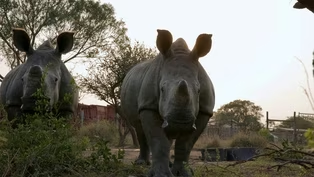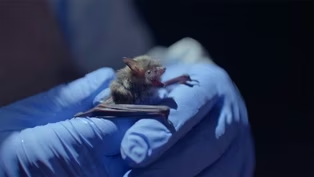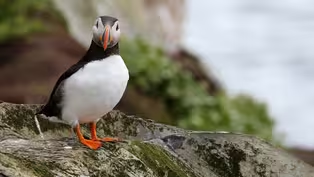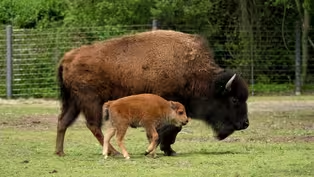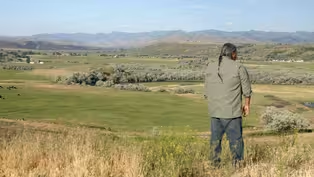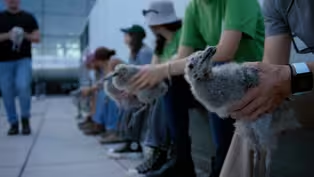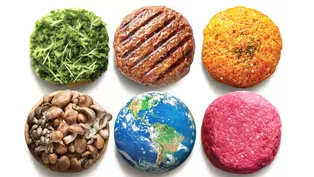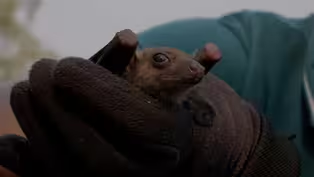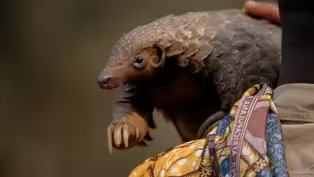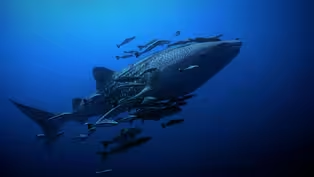
Rebuilding a Forest | WILD HOPE
Special | 15m 56sVideo has Closed Captions
In Brazil’s Atlantic Forest, Mauricio Ruiz has turned his love for nature into action.
In Brazil’s Atlantic Forest, Mauricio Ruiz has turned his love for nature into action by working with the community to reforest a critical stretch of the nation’s most endangered forest, and by using drones to help him reach his goal of planting 15 million new trees.
Problems playing video? | Closed Captioning Feedback
Problems playing video? | Closed Captioning Feedback
Major support for NATURE is provided by The Arnhold Family in memory of Henry and Clarisse Arnhold, Sue and Edgar Wachenheim III, The Fairweather Foundation, Charles Rosenblum, Kathy Chiao and...

Rebuilding a Forest | WILD HOPE
Special | 15m 56sVideo has Closed Captions
In Brazil’s Atlantic Forest, Mauricio Ruiz has turned his love for nature into action by working with the community to reforest a critical stretch of the nation’s most endangered forest, and by using drones to help him reach his goal of planting 15 million new trees.
Problems playing video? | Closed Captioning Feedback
How to Watch Nature
Nature is available to stream on pbs.org and the free PBS App, available on iPhone, Apple TV, Android TV, Android smartphones, Amazon Fire TV, Amazon Fire Tablet, Roku, Samsung Smart TV, and Vizio.
Buy Now
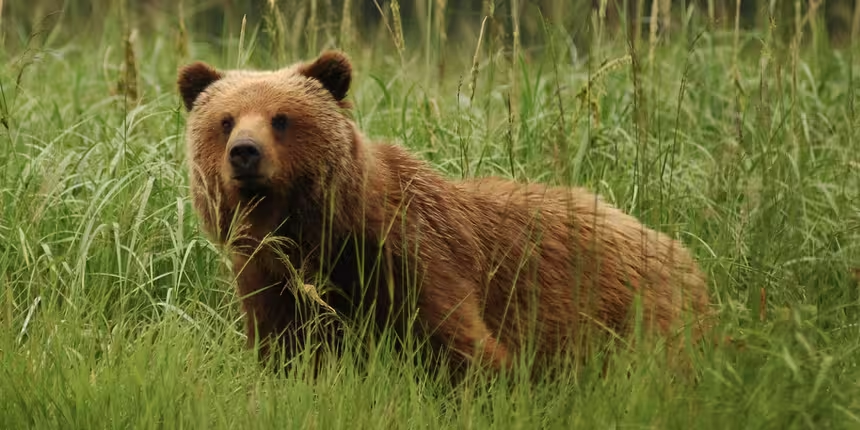
Explore More Ways to Watch
Bring the beauty and wonders of wildlife and natural history into your home with classic NATURE episodes.Providing Support for PBS.org
Learn Moreabout PBS online sponsorshipMore from This Collection
WILD HOPE is a new series of short films that highlights the intrepid changemakers who are restoring our wild places and sparking new hope for the future of our planet.
Video has Closed Captions
How does a densely populated nation like Singapore transform into a lush green oasis? (14m 51s)
Video has Closed Captions
For decades, rhinos have been the face of poaching. (16m 28s)
Video has Closed Captions
As a deadly fungus devastates North America’s bats, scientists are testing new ways to save them. (14m 47s)
Video has Closed Captions
In the Westman Islands, one community has banded together to save lost young puffins. (13m 15s)
Video has Closed Captions
Sixty million American bison once thundered across the prairies of North America. (18m 52s)
Reclaiming Bear River | WILD HOPE
Video has Closed Captions
The Bear River was once a lush area with wetlands, hot springs, and abundant wildlife. (17m 25s)
Building for Birds | WILD HOPE
Video has Closed Captions
Millions of migrating birds pass through our yards, but glass windows pose a deadly threat. (16m 3s)
Mission Impossible | WILD HOPE
Video has Closed Captions
Meet the genius behind the plant-based Impossible Burger. (39m 41s)
Pangolin Protectors | WILD HOPE
Video has Closed Captions
Due to the demand for their scales, pangolins are the most trafficked animal in the world. (12m 24s)
Way of the Elephants | WILD HOPE
Video has Closed Captions
Elephant migration corridors in India are a necessary thoroughfare for one of the largest animals. (15m 11s)
Whale Shark Homecoming | WILD HOPE
Video has Closed Captions
A renowned spiritual leader is inspiring fishermen to become guardians of the world’s biggest fish. (16m 49s)
Providing Support for PBS.org
Learn Moreabout PBS online sponsorship♪ (fire crackling) (Mauricio speaking in Portuguese) (fire crackling and shovel hitting brush fire) (drone whirring) (Mauricio speaking in Portuguese) NARRATOR: Mauricio Ruiz grew up in Brazil's Atlantic Forest.
It's less well known than its neighbor, the Amazon, but it's one of the most endangered ecosystems in the world.
It supports 20,000 species of plants and over 2,000 kinds of vertebrates, with new species still being discovered.
(birds chirping) Many are found nowhere else in the world.
The Atlantic Forest had a profound effect on Mauricio.
(Mauricio speaking in Portuguese) (birds chirping) (bird chirping) (monkey screeches) ♪ ♪ NARRATOR: Mauricio's mission has taken on ever- increasing urgency.
His country has lost 13% of the Amazon since colonization.
The Atlantic Forest has fared far worse.
Between 75% and 90% of its original range has been deforested, about one-sixth of Brazil's territory.
That's largely because the country's two biggest cities, São Paulo and Rio de Janeiro, and the industries that support them, have sprawled across the region.
(Mauricio speaking in Portuguese) (birds chirping) NARRATOR: Today, 125 million people live in what remains of the Atlantic Forest.
This development has reduced much of the forest to tiny fragments.
Without corridors to connect these areas, wildlife within them can't migrate, find new food sources, or interbreed to keep their population viable.
(birds chirping) ♪ ♪ In 2006, the government passed a law protecting the surviving forest from future development.
But it's up to civilian-led action to enforce it.
That's where people like Mauricio step in.
(Mauricio speaking in Portuguese) ♪ NARRATOR: Mauricio founded the Earth Institute for Environmental Preservation, or ITPA, a little over 25 years ago.
♪ Its mission is to restore the deforested corridor between the Tinguá Forest and Serra Da Bocaina National Park, about 50 miles away.
It's a critical connector for wildlife, but the effort requires massive human buy-in.
(Mauricio speaking in Portuguese) NARRATOR: ITPA works directly with the communities who live beside the forest and also depend on it.
Public and private funding help ITPA employ 300 local workers.
Some work on a fire brigade, fighting fires that are illegally set to clear land for crops and livestock.
♪ But the biggest arm of ITPA is its nursery.
(water hose spray) ♪ (Rejane speaking in Portuguese) NARRATOR: Rejane Duarte Da Costa runs nursery operations.
Seeds collected in the region are brought here to be raised.
(Rejane speaking in Portuguese) (rain hits leaves) (water flows gently) NARRATOR: These trees will eventually replenish the ecosystem, helping to prevent erosion from flooding and filtering pollutants out of the soil.
(water flows gently) ♪ The nursery raises 200,000 saplings a year and hopes to soon double that output.
To grow that much, ITPA hires and trains local workers ♪ and provides environmental education as well.
(kids play and laugh) ♪ (Mauricio speaking in Portuguese) ♪ ♪ NARRATOR: Students of all ages learn the value that trees bring to them and their communities.
♪ (Leila speaking in Portuguese) ♪ (Rejane speaking in Portuguese) ♪ NARRATOR: That value is equally important for older generations to understand.
At least 80% of the remaining Atlantic Forest is privately owned.
(Mauricio speaking in Portuguese) ♪ (Artur speaking in Portuguese) NARRATOR: Mauricio has convinced Artur dos Santos to reforest a portion of his land.
(Mauricio and Artur talking) (Artur speaking in Portuguese) (Mauricio speaking in Portuguese) ♪ NARRATOR: ITPA makes the process easy for him by providing the plants and the labor for free.
♪ (shovel hitting dirt) ♪ (Mauricio speaking in Portuguese) (drilling sounds) NARRATOR: They plant a variety of native species, including jacaranda, mastic, and floss silk trees to rebuild the forest diversity.
♪ Each patch of forest will take years to mature, but together, they create critical habitat for wildlife and a healthier ecosystem for the community.
(Mauricio speaking in Portuguese) NARRATOR: That sense of community is what inspired Artur to act.
(Artur speaking in Portuguese) (river flowing) (Mauricio speaking in Portuguese) ♪ NARRATOR: Over 25 years, ITPA has restored over 13 square miles of forest corridors, but an area six times that size gets cut down in the Atlantic Forest in just one year.
Mauricio realized he needed to scale up dramatically.
(Mauricio speaking in Portuguese) (forest fire burning) (bee buzzing) ♪ NARRATOR: In 2018, Mauricio set an ambitious goal: plant 20 million trees.
Enough to cover five times as much ground as they forested in the last 20 years.
To do it, he's partnered with a technology company, MORFO, which has an innovative approach for large-scale restoration.
(Gregory speaking in Portuguese) NARRATOR: They do it with drones.
(drone whirring) (Gregory speaking in Portuguese) (drone whirring) NARRATOR: This small hillside is being used as a test site.
By planting seeds instead of saplings, they should save time and money.
(drone whirring) Imaging and satellite technology helps them pick the best areas for reseeding.
(Gregory speaking in Portuguese) (axe cutting brush) (Mauricio speaking in Portuguese) NARRATOR: The team prepares 58 different species of seeds for planting.
Each seed is encased with the specific nutrients, bacteria, and fungi they'll need to grow.
(Gregory speaking in Portuguese) (seed capsules shaking) ♪ (drone whirring) ♪ NARRATOR: Then it's time to take to the air for the high-tech drone dispersal.
(drone whirring) ♪ MORFO has seen a sprout rate of about 80% in past drone projects.
(Gregory speaking in Portuguese) (seed capsules falling out to ground) NARRATOR: That's 50 times more than one person could do.
(Gregory speaking in Portuguese) ♪ NARRATOR: The technique has already been successful in Gabon and French Guiana.
There, a former mining zone went from less than 1% to 55% vegetation cover in just one year.
♪ If the test run works as well here, Mauricio aims to deploy it across the whole Atlantic Forest corridor.
(Mauricio speaking in Portuguese) NARRATOR: Before working with MORFO, ITPA had planted over four and a half million trees.
The addition of drones may bring Mauricio's ambitious goals within reach, but for him, reforestation ultimately depends on the will of the people.
(Mauricio speaking in Portuguese) ♪ ♪ ♪ ♪ ♪ ♪

- Science and Nature

Explore scientific discoveries on television's most acclaimed science documentary series.













Support for PBS provided by:
Major support for NATURE is provided by The Arnhold Family in memory of Henry and Clarisse Arnhold, Sue and Edgar Wachenheim III, The Fairweather Foundation, Charles Rosenblum, Kathy Chiao and...

